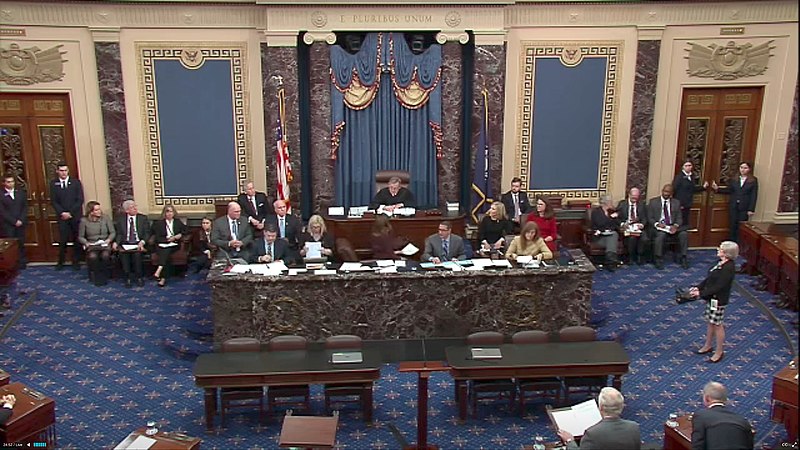As the House’s December Articles of Impeachment reach the U.S. Senate after the holiday, Senators and presiding Chief Justice Roberts strap in for a trail on the matter.
The last time an impeachment matter was tried in American history was against former President Bill Clinton on the grounds of perjury, obstruction of justice and abuse of power claims. Ending in acquittal, that trial lasted nearly two months and the timeline of this one is surely on the minds of two Democratic election frontrunners. Senators Bernie Sanders and Elizabeth Warren are compelled to be in Washington per their Senate duties, while other nominees are free to campaign. Not to mention, other Senators, too, are looking to get back out there to campaign as incumbents, including Majority Leader Mitch McConnell.
This time around, President Trump is accused by the House similarly for abuse of power, but also for “obstruction of congress.” The Articles Impeachment outline the House’s reasoning for both charges. They include mention of the President withholding aid money from the Ukrainian government in exchange for their announcing an investigation into political opponent Joe Biden, another election frontrunner, and for ordering government agencies to resist House subpoenas for the purposes of discovering the selfsame aid-withholding.
According to nine-page document, “In the history of the Republic, no President has ever ordered the complete defiance of an impeachment inquiry or sought to obstruct and impede so comprehensively the ability of the House of Representatives to investigate ‘‘high Crimes and Misdemeanors.””
There exist many Senate procedures that complicate the process; complexity being a staple of The Senate. For example, the Senate began by debating a proposed a limited two-day timeline for opening arguments by Senator McConnell, a proposal that has since been withdrawn. Another being that, at any time, the Senate can move to deliberate privately. To the exclusion of TV cameras and all non-Senators, a mere majority is necessary. When it comes time to reach a verdict, a Constitutional two-thirds must vote in the affirmative to remove the president. In the case that all Senators vote, 67 must vote to convict.
Currently, Republicans hold a 53-seat majority in the Senate, meaning that the magic two-thirds consensus is unlikely to be reached, resulting in the President’s acquittal.
Former Vice President Biden, currently busy canvassing in Iowa, has since commented limitedly on his involvement in the case. He claimed that there would be “no legal basis” for a subpoena to reach his desk and followed-up the next day on Twitter where he walked back the comment. He stated that he “has always complied with a lawful order in my eight years as VP…” In another turn, also on Twitter, Biden clarified that he isn’t “going to pretend that there is any legal basis for Republican subpoenas for my testimony.” During the House’s initial inquiry into impeachment, he scathed the President for “shooting holes in the constitution.”
The President’s defense includes renowned Harvard Law emeritus professor Alan Dershowitz, the same counsel who appeared on the national stage with legal analysis of Clinton’s impeachment.
The trial is set to proceed under a similar ruleset to that of Clinton, meaning that arguments about witnesses and subpoenas are not to be up until opening arguments conclude. Such subpoenas and witnesses would newly come to exist, and potentially bring cabinet members and those close to the President before the Senate. Each side will take three days for opening arguments.


